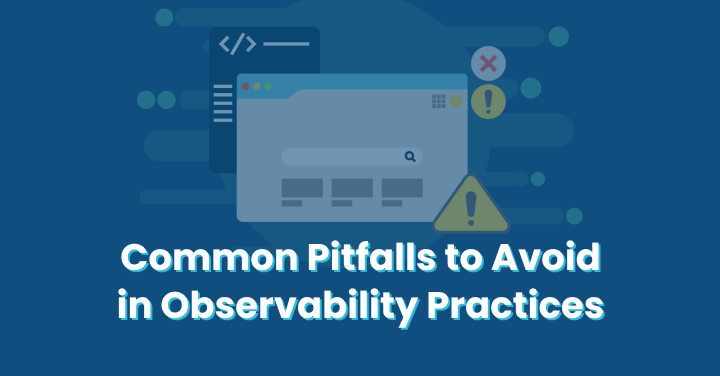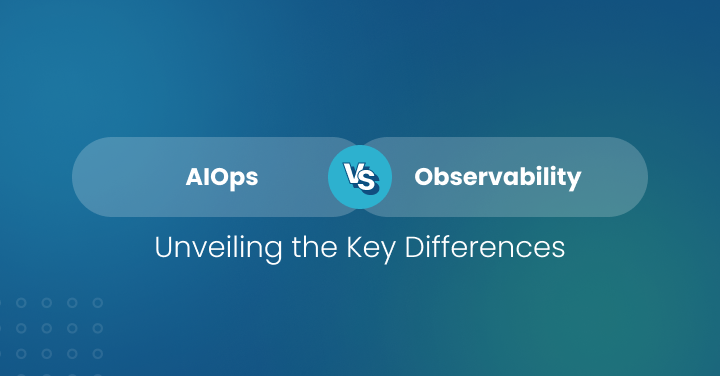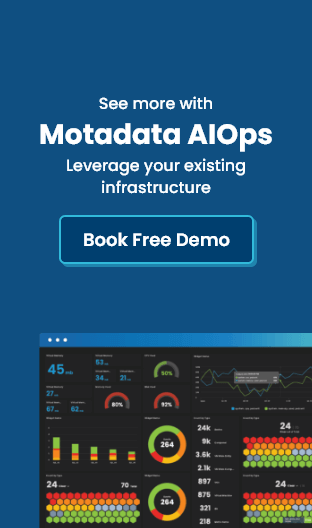Introduction: The Shifting Landscape of IT
It begins with a familiar story. A digital banking app that worked flawlessly yesterday suddenly crawled today.
Customers abandon transactions, support calls spike, and engineers scramble across dashboards from different tools, each showing fragments of the truth.
Hours slip away before someone links the slowdown to a misconfigured cloud service. The problem wasn’t a lack of data; it was the lack of observability.
This scenario is becoming common as enterprises adopt hybrid, multi-cloud, and edge architectures.
According to Flexera’s 2024 State of the Cloud Report, 89% of organizations now operate with a hybrid or multi-cloud strategy, layering complexity into already distributed environments. The payoff is agility, but the cost is visibility.
By 2026, observability is no longer a “nice to have.” It’s the backbone of resilient digital operations. Yet IT leaders face stubborn obstacles: tool sprawl, data overload, rising costs, and more.
This article unpacks the 10 biggest observability obstacles in 2026, why they matter, and how forward-thinking teams can overcome them.
Understanding Observability
What Observability Really Means?
Observability goes beyond monitoring. Monitoring tracks known metrics against thresholds; observability asks new questions of your system when failures appear without obvious causes.
The Three Pillars
- Metrics: Numerical data points (e.g., CPU usage, latency) show trends.
- Logs: Event records that provide context for what happened.
- Traces: End-to-end request journeys across services, invaluable for root cause analysis.
Observability in DevOps and SRE
In DevOps and SRE practices, observability isn’t just a tool but a culture. It empowers teams to anticipate failures, shorten incident responses, and design systems for reliability.
Obstacle 1 – Tool Sprawl and Lack of Integration
The Challenge
Over the years, enterprises have acquired monitoring tools in an ad hoc fashion. One platform might track infrastructure uptime; another handles application performance, while yet another focuses on security events.
At first, this seemed manageable. But as environments scale, IT teams end up managing more than a dozen dashboards, each providing only a partial view of reality. Critical signals often get lost in translation because these tools rarely “speak” to each other.
Why It Matters in 2026?
Fragmented toolchains create fragmented insights. Engineers are forced to jump between dashboards, exporting CSVs or manually correlating metrics when an outage occurs.
This wastes precious time that should be spent resolving incidents. Gartner warns that by 2026, 40% of enterprises will accumulate “observability debt” caused by siloed monitoring tools, meaning their ability to diagnose issues will decline even as investments in tooling rise.
For modern enterprises, lack of integration is not just inefficient, it becomes a liability that directly impacts service uptime and customer trust.
How to Overcome It?
- Prioritize unified platforms capable of ingesting logs, metrics, and traces into a single data plane, enabling holistic insights.
- Demand vendor-agnostic integrations with ITSM systems, CI/CD pipelines, and collaboration tools to ensure observability flows into action.
- Treat observability as an ecosystem, not a toolkit. Instead of buying piecemeal solutions, design an integration-first strategy that grows with your infrastructure.
Obstacle 2 – Data Overload and Signal-to-Noise Ratio
The Challenge
The explosion of telemetry data has become both a blessing and a curse. A single Kubernetes cluster can generate millions of datapoints per second, from pod metrics to container logs and distributed traces. Without intelligent filtering, teams are overwhelmed by the sheer volume.
Why It Matters in 2026?
The danger of “more data” is that it becomes harder to identify the few signals that matter. In a 2024 IDC survey, 62% of IT leaders admitted to ignoring at least half of their monitoring alerts because of overload.
This means anomalies are often buried beneath irrelevant noise, and opportunities for proactive resolution are missed. As IT environments become more distributed, this imbalance only worsens, threatening both reliability and efficiency.
How to Overcome It?
- Use intelligent sampling and dynamic thresholds to reduce unnecessary data while preserving what’s critical.
- Leverage AI/ML models to detect anomalies, highlighting unusual patterns rather than raw metrics.
- Continuously review signals to align monitoring with business outcomes, ensuring teams only focus on the data that drives impact.
Obstacle 3 – Rising Infrastructure Complexity
The Challenge
Modern IT estates are no longer confined to a single data center. Enterprises now operate across multi-cloud providers, SaaS ecosystems, microservices architectures, and edge devices. Each layer introduces new dependencies and points of failure.
Why It Matters in 2026?
Complexity breeds fragility. A simple misconfiguration in a cloud API or a failing container at the edge can ripple across the system, bringing down critical services.
By 2026, observability must account for this “system of systems” reality. Without the ability to map and understand these dependencies, IT teams will continue fighting symptoms instead of addressing causes.
How to Overcome It?
- Map dependencies continuously using real-time topology diagrams that show how infrastructure and services interact.
- Standardize instrumentation across all environments, from bare metal to serverless, to ensure data consistency.
- Use topology views to anticipate ripple effects of failures and prioritize remediation accordingly.
Obstacle 4 – Limited Skilled Workforce
The Challenge
Observability platforms are powerful but demand specialized skills, knowledge of telemetry collection, distributed systems, and sometimes even data science. Unfortunately, the global talent pool remains thin.
Why It Matters in 2026?
The skills shortage is a major barrier. The 2025 ISACA Skills Report predicts a global shortfall of 3.5 million IT and cybersecurity professionals, many of whom would otherwise drive observability initiatives. Organizations without in-house expertise risk underutilizing expensive platforms or failing to configure them effectively.
How to Overcome It?
- Simplify platforms with automation, templates, and prebuilt workflows so less specialized staff can still manage them.
- Invest in cross-training between Dev, Ops, and Security teams, creating a shared observability culture.
- Partner with vendors who offer managed observability services, allowing enterprises to benefit from expertise without needing to hire at scale.
Obstacle 5 – High Costs of Data Storage and Processing
The Challenge
Observability data is massive. Every metric, trace, and log stored over time eats into budgets. Storing “everything forever” is neither technical nor financially sustainable.
Why It Matters in 2026?
Cloud bills escalate quickly. According to 451 Research, observability data costs are increasing by 25% annually for large enterprises.
Leaders face hard trade-offs: retain less data and risk blind spots or overspend on storage at the expense of innovation budgets.
How to Overcome It?
- Apply retention tiers, keeping critical data hot, archiving less relevant data, and expiring the rest.
- Adopt cost-aware observability tools that compress, deduplicate, and optimize storage.
- Monitor ROI, measuring the actual business value of data retention, prioritizing datasets that directly support uptime and customer experience.
Obstacle 6- Observability Without SLOs — Drowning in Data, Starved of Insight
The Challenge
IT teams collect a huge amount of data such as metrics, logs, and traces, but often struggle to make sense of it. Without clear Service Level Objectives (SLOs), this data lacks purpose. Teams end up reacting to every alert instead of focusing on the issues that affect service reliability and user experience the most.
Why It Matters in 2026?
As systems grow more complex and user expectations continue to rise, having just loads of data is not enough. What truly matters is knowing whether your services are meeting the reliability goals your business depends on.
Many organizations still don’t define or track SLOs, which makes it hard to measure service health, identify risks early, or prove that IT performance supports business outcomes.
How to Overcome It?
- Define measurable SLOs for critical services such as uptime, latency, and error rate to set clear performance expectations.
- Use SLOs to bridge the gap between raw telemetry and actionable insight, ensuring data translates into real service outcomes.
- Transform large volumes of data into meaningful performance indicators that reflect actual user experience.
- Track and analyze SLOs in real time to identify early warning signs and prevent potential service disruptions.
Obstacle 7 – Lack of Standardization in Observability Practices
The Challenge
One team calls it “latency,” another calls it “response time.” Logs vary in structure, and different tools record the same metric in incompatible formats. This lack of standardization breeds confusion.
Why It Matters in 2026?
Inconsistent practices make collaboration difficult. During incidents, engineers lose valuable minutes trying to reconcile data definitions. Worse, observability insights often fail to scale across teams because of mismatched conventions.
How to Overcome It?
- Adopt OpenTelemetry, now the leading open-source standard for telemetry instrumentation.
- Define global naming conventions for metrics and logs that apply across the enterprise.
- Enforce standards by embedding checks into CI/CD pipelines and governance frameworks, ensuring consistency at scale.
Obstacle 8 – Alert Fatigue and Poor Incident Prioritization
The Challenge
An alert is only valuable if it drives action. Yet many organizations receive thousands of alerts each week, most of them redundant or irrelevant.
Why It Matters in 2026?
Excessive noise erodes trust. PagerDuty’s 2024 Incident Response Survey found that 41% of engineers admitted to ignoring alerts because of overload. This makes it easy for truly critical incidents to slip through unnoticed, directly impacting time and customer experience.
How to Overcome It?
- Correlate related alerts to reduce duplication and highlight root causes.
- Score alerts by severity, tying prioritization to business impact rather than technical thresholds alone.
- Refine escalation policies, ensuring only meaningful, actionable alerts reach on-call engineers.
Obstacle 9 – Security and Compliance Concerns
The Challenge
Telemetry often contains sensitive information, user IDs, transaction logs, or even PII. Mishandling this data introduces major risks.
Why It Matters in 2026?
Regulatory scrutiny is intensifying. With GDPR, CCPA, and new frameworks such as the EU’s 2025 Data Act, organizations must treat observability data as sensitive. Compliance failures can lead to fines, reputational damage, and loss of customer trust.
How to Overcome It?
- Mask or redact sensitive fields at the point of ingestion.
- Implement strict RBAC to limit data access based on role.
- Choose observability tools with compliance certifications like ISO 27001, SOC 2, and HIPAA for regulated industries.
Obstacle 10 – Slow Root Cause Analysis (RCA)
The Challenge
When outages occur in distributed systems, tracing the problem across dozens of interconnected services is daunting. RCA often involves guesswork and manual data stitching.
Why It Matters in 2026?
Extended RCA means extended downtime. ITIC’s 2024 survey revealed that 87% of enterprises lose over $300,000 for every hour of downtime. The longer RCA takes, the more expensive incidents become.
How to Overcome It?
- Deploy tools with automated RCA that use ML to trace anomalies back to their origin.
- Leverage distributed traces to connect end-user experience to back-end components.
- Document learnings from each RCA and share them across teams to accelerate future incident response.
Obstacle 11 – Resistance to Cultural Change
The Challenge
Too many organizations treat observability as a tool of purchase rather than a cultural practice. Teams cling to silos, and leadership views observability as optional.
Why It Matters in 2026?
Without cultural alignment, tools will fail to deliver their potential. Observability must be adopted as a shared responsibility across development, operations, and security.
How to Overcome It?
- Promote observability as part of SRE culture, emphasizing ownership: “you build it, you run it.”
- Align KPIs across teams, focusing on uptime, latency, and customer experience.
- Celebrate wins where observability improves outcomes, reinforcing its importance as a practice rather than a product.
Conclusion: The Path Forward
Observability is not free of challenges; however, ignoring them is far more costly. Tool sprawl, data overload, and alert fatigue waste time. Rising costs, compliance risks, and cultural resistance stall progress.
The organizations that thrive in 2026 will be those that treat observability as both a technical and cultural discipline. By standardizing practices, embracing automation, investing in talent, and aligning observability with business outcomes, IT leaders can turn today’s obstacles into tomorrow’s advantage.
FAQs
Monitoring tracks known issues using thresholds, while observability provides deep insight into unknown issues by correlating metrics, logs, and traces.
Because IT has become more distributed, multi-cloud, edge, and microservices increase interdependencies, data volumes, and complexity.
By applying data retention tiers, deduplication, and using cost-aware platforms that balance visibility with budget.






